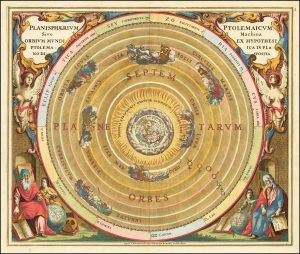The sky has always attracted the attention of human beings. Its grandeur, the celestial bodies and various events that occur in the sky have motivated people to observe the sky since ancient times, and based on this, they can organize their perception of the world and the Universe. At first, we only had our eyes as an instrument of observation and our imagination to conclude why the stars moved in a certain way. The fact that after the day came the night, and then the day again, was already a special situation and merited explanations that today would sound like fantasy. Soon man discovered that many other patterns - in addition to day and night - were constantly repeated, and this served purposes such as agriculture or orientation. When celestial events began to be better understood, the first astronomers would emerge.

Ancient China
The first astronomical observations and measurements are difficult to specify. Astronomy in ancient China has been considered the oldest, with traces found dating back to the 4,000 BC., with records of eclipses and novae. Records of comets, supernova explosions and the design of calendars were his most important achievements. They divided the sky into 284 constellations and considered the Universe to be like an orange hanging from the North Star back then. As their observations progressed, they were also able to record lunations to measure time and observe sunspots.
Babylonian astronomy
The Babylonians specialized in studying the Sun and Moon, specifically solar eclipses, which they were later able to predict thanks to their advances in mathematics. They managed to anticipate the lunar phases and planetary positions using cuneiform tablets. The Babylonians reached their peak around the 600-500 BC., achieving discoveries as interesting as the Saros Cycle, and being able to make calculations that today only differ by a few decimal places (e.g. the synodic month). The concept of the zodiac is also attributed to them.

Greek advances
Ancient Greece represented many of the most important advances in astronomy, and led to many discoveries based on observation alone. The Greeks considered the Earth as a disk, with Olympus in its center, and around it, the “Okeanos” (universal sea). The study of planetary movements was one of the most fruitful fields, as well as observation and mathematical advances, led by figures such as Pythagoras, Archimedes and Aristotle. Aristarchus of Samos (310 BC-230 BC) calculated for the first time the distance from the Earth to the Sun and the Moon. They firmly maintained the idea of a geocentric system for more than 2,000 years.


